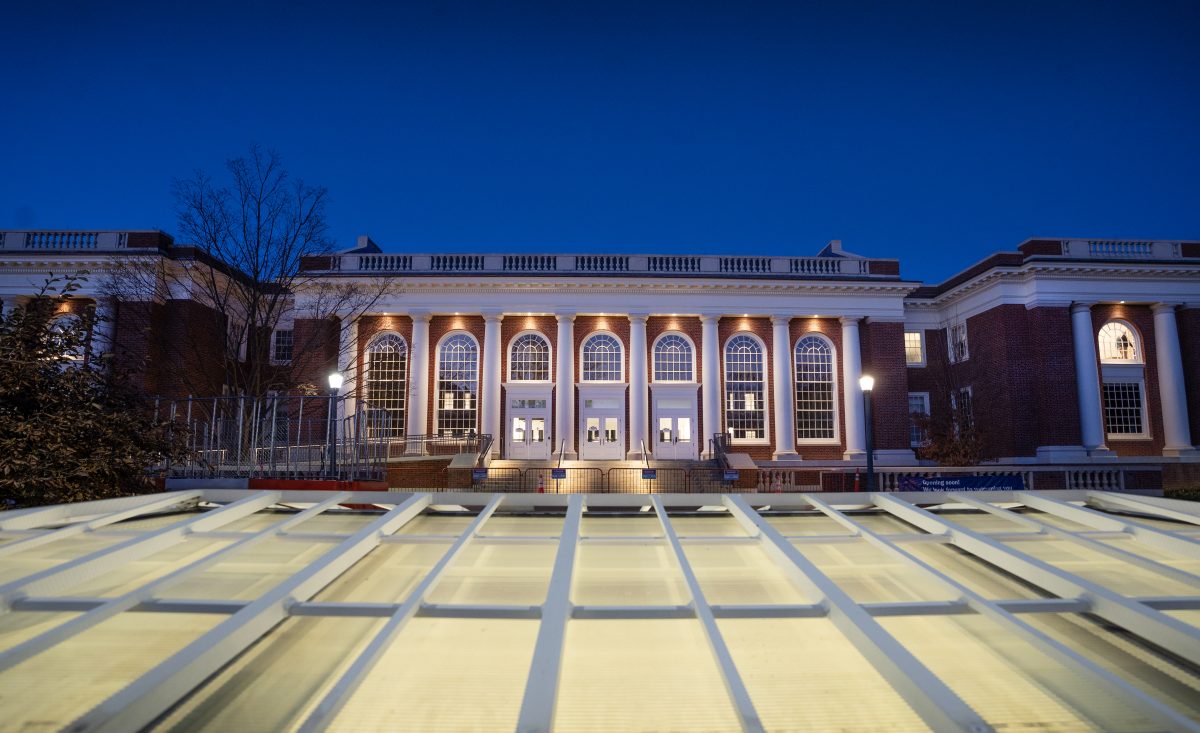What’s 80 years to a library? The Rotunda itself served as the University of Virginia’s main volumes venue for more than 100 years, after all.
But by 2018, eight decades after a new library took the Rotunda’s place and shepherded in an era of research-driven scholarship, change was necessary. UVA administrators decided they would take on one of the most challenging renovations in school history: expanding, reorganizing, and overhauling Alderman Library.
“From a construction point of view, it had never had a major renovation,” construction project director Kit Meyer says. “There was some discussion of renovating in the ’70s, but the students complained about their main library being closed.”
The $141 million Edgar Shannon Library, as it’s known now, officially opened in January, more than three years after construction began. Led by UVA architect Brian Hogg and Chicago-based HBRA Architects, the project involved gutting the 100,000-square-foot structure, demolishing what were known as the Old and New Stacks, and building a 130,000 square-foot, five-story addition.
A university statement just before the library’s grand opening said the renovation was intended “to create light-filled, easily accessible study space for users” while maintaining the building’s historic interior features. The result is an aesthetically vintage structure with modern conveniences designed to both allow people and books to coexist and match the way we now use libraries.
According to Elyse Girard, executive director of communications and user experience, library-goers in the past entered and headed for the service desk. Now, assisted by online search and navigation tools, they browse on their own. All but one card catalog is gone from the new library, with digital kiosks helping guide bibliophiles. The study rooms have digital amenities as well, like monitors and ample connectivity.
The books, some of which are still finding their way to the library, haven’t been replaced by digitization, of course. “The books on the shelves bring life to the building, and you really notice that as we fill floor to floor,” Girard says.
Meyer says physical books were a driving force behind the renovation. Logistically, UVA needed more space for them, both on site and in climate-controlled, off-site storage. And environmentally, publications and people like different conditions. Modern technology allows the Edgar Shannon Library to balance the dry atmosphere books prefer with the fresh air humans like to breathe.
With an eye for preserving the library’s original design, some of the rooms in Shannon library seem unchanged at first glance. That’s a feature not a bug (book?), Girard says. It makes folks who remember the old library feel comfortable. Some design elements, like the prominent iron railings, are even taken from the university’s original Rotunda library. Other parts of the structure are new and surprising, giving the next generation of Hoos a chance to love the library in their own way.
“We are a public library and a community space,” Girard says. “People think of us as only supporting faculty and students, but anyone can come in and use the library, and we encourage that.”
